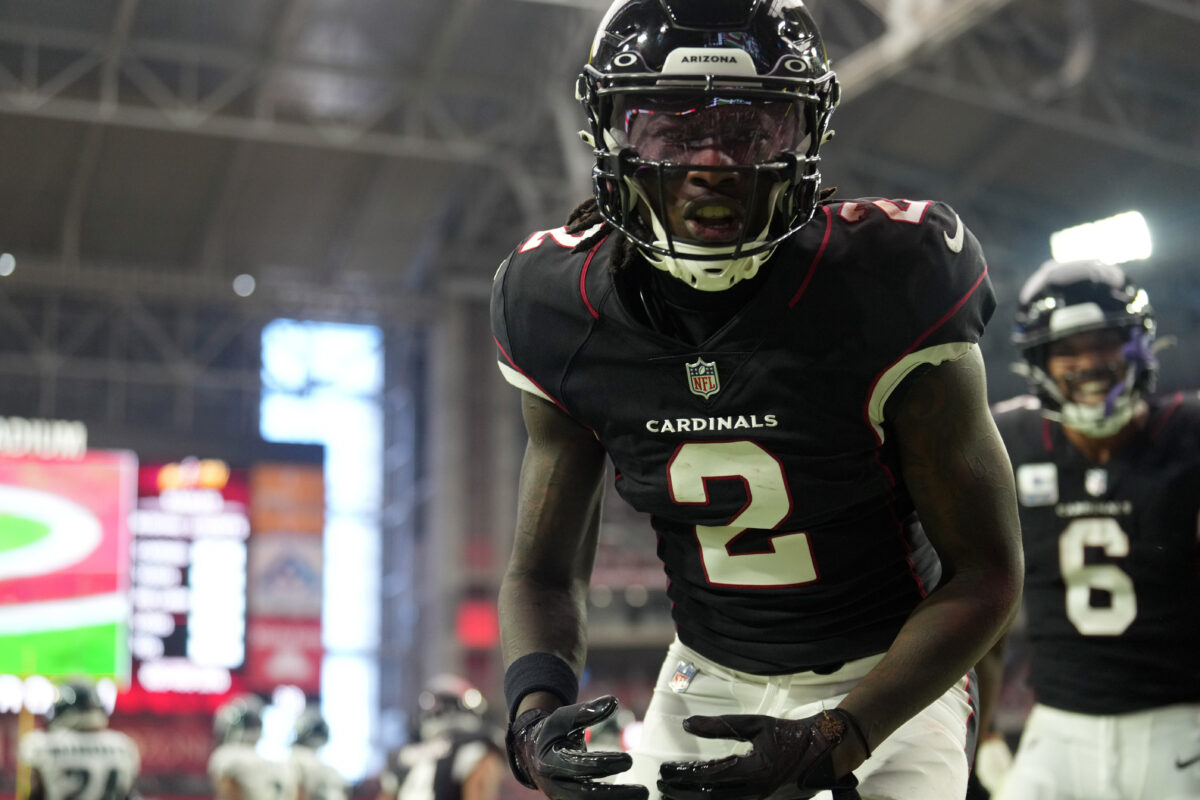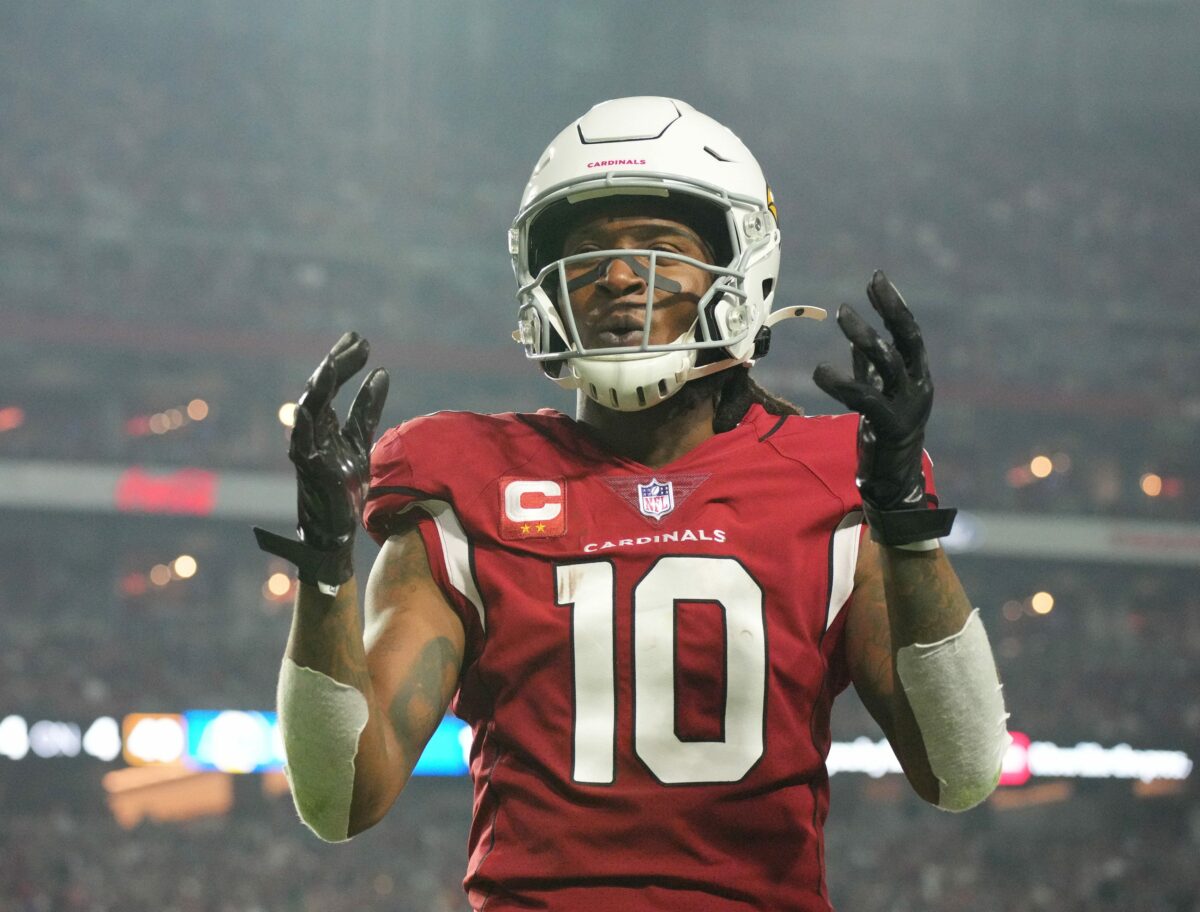Fantasy football risers and fallers entering Week 3.
People new to fantasy football often ask why running backs are the highest-paid in auctions and dominate the first round of every draft. It’s the same reason diamonds and gold are so expensive – they’re rare.
Running backs aren’t rare. Successful running backs are rare. Heading into Monday night’s game between the Lions and Packers, through two weeks of the 2021 season there were only 10 players who had rushed for 150 or more yards – and one of them was a quarterback (Lamar Jackson). On the flip side, 24 receivers had posted 150 or more yards and only one of them was a running back (Christian McCaffrey).
To make things even more pronounced, only one running back has accounted for more than 200 rushing yards (Derrick Henry). There are seven receivers with more than 200 receiving yards – and most if not all were available after a dozen running backs came off a draft board or broke a budget in an auction.
While quarterbacks and receivers are the ones who have the giant week that leads owners to victory, it’s having those few running backs capable of dominating that makes them so valuable.
It’s their rarity that makes them a commodity.
Here is the Week 3 Fantasy Football Market Report:
Fantasy football risers
RB Ty’Son Williams, Baltimore Ravens
When it comes to our “Risers” list, we typically look at players who are either available or undervalued. The Ravens’ run game is clearly dominated by Lamar Jackson, but the role of de facto running back seemingly is always up for grabs. Mark Ingram. Gus Edwards. Dobbins. They all got their shot. Latavius Murray was the odds-on choice to be the lead dog, but, through two games, Murray has 19 carries for 64 yards (3.4 a pop with a long of eight). Williams has 22 carries for 142 yards (6.5 per tote with a run of 20 or more in each game). The reason the mantle gets passed in this offense is that the Ravens go with the hot hand and, unless he gets injured, that’s going to be Williams moving forward.
TE Rob Gronkowski, Tampa Bay Buccaneers
Two weeks through the season and the leading scorer in the NFL is Tommy Boy’s running buddy Gronk. He has scored four touchdowns in two games – all in the red zone. When Tom Brady gets near the goal line, guys like Mike Evans get the shine. But at the outer and middle edge of the red zone is when Gronk and their shorthand history with each other comes into play. If you own Gronk, his value will never be higher. There’s one ball in Tampa Bay and Brady has to spread it around. If Gronk stays healthy – a really big “if” – he can put himself back in the 2021 TE Mount Rushmore conversation with Kelce, Waller and Kittle. In tight end-mandatory leagues, he’s been a godsend. You can get “Kelce-style” return in a trade right now for one reason – Gronk has earned that respect.
WR Rondale Moore, Arizona Cardinals
Quick quiz for you. Who leads the Cardinals in targets with 13? Who leads them in receptions with 11? Who leads them in yards with 182? The answer to all of those is Moore – a second-round rookie slot speedster who has quickly earned not only the confidence of Kyler Murray but also of the coaching staff. In most leagues, he is considered a fourth receiver. That’s A.J. Green. He’s making a case that Christian Kirk is the No. 3 guy and he and DeAndre Hopkins are 1-2. He’s going to make more believers.
[lawrence-related id=460513]
QB Derek Carr, Las Vegas Raiders
Carr’s name never gets mentioned in the discussion of elite quarterbacks, but those who have had him as a backup or a QB1b in a tandem system know better – at least in fantasy terms. The Raiders aren’t shy about passing. Everyone knows that. But, they’re 2-0 in large part because Carr has thrown for 817 yards and four touchdowns. Keep in mind, these wins weren’t against the Jaguars and Texans. These were the Ravens and Steelers. If he is somehow still in a rotation, that has to stop, and he needs to be No. 1 and No. 1a, at worst.
WR Mike Williams, Los Angeles Chargers
Williams is no stranger to fantasy owners. He has been the Keenan McCardell of his era. He’s good for five or six passes for 60 or 70 yards and the occasional TD when pressed into a lineup. Last year in the first season paired with Justin Herbert, he was almost forgotten – catching 48 passes for 756 yards and five touchdowns. Those weren’t awful numbers, but they didn’t keep him in a fantasy lineup. In his first two games, Williams has 15 receptions for 173 yards and two touchdowns – about 30 percent of his 2020 numbers. Herbert has a new running buddy who requires acknowledgement.
Fantasy football fallers
RB Saquon Barkley, New York Giants
Numbers speak volumes in the NFL. Numbers scream volumes in fantasy football. Christian McCaffrey and Barkley were No. 1 and 2 picks in most fantasy drafts in 2020. Both went down early to significant injuries. McCaffrey has reclaimed his spot. Barkley? Not so much. Two games into his Saquon 2.0 version, he has 23 carries for 83 yards, three catches for 13 yards and 39 fewer rushing yards than his quarterback. Seeing as 41 of Saquon’s 83 rushing yards came on one play, this is a time for legitimate concern and quiet reflection. How many more dud weeks can you take if you’re counting on Barkley?
QB Ben Roethlisberger, Pittsburgh Steelers
Roethlisberger is glacial, so rushing points are a happy accident. If you’re playing Big Ben, it’s for passing production. Two games in, that translates to 483 yards and two touchdowns – numbers that won’t win weekly head-to-head matchups against just about anybody. He’s obviously part of a two-QB plan for those who have him on their rosters, but, against both the Bills and Raiders – admittedly two quality teams – he hasn’t earned a spot in a lineup where he is the QB1b. Toss in news of a recent left pectoral injury, and he’s QB2 unarguably and cut-bait for the twitchy.
WR Allen Robinson, Chicago Bears
In many circles, Robinson was viewed as a WR1 if you were in a 12-player league – 10-player in some. The obvious question was with which quarterback is he going to be that guy? Through two games with both QBs, he has eight catches for 59 yards and a touchdown. He’s transformed from a WR1 to an opponent-based play. Who would have seen this coming? Everyone? Targeted 15 times. All contested. Some double-contested. Until someone else emerges as a legitimate threat, he keeps getting doubled.
TE Zach Ertz, Philadelphia Eagles
There was a time when, in tight end-mandatory leagues, if you had Ertz, you were talking tough. Now, you’re duck-and-cover. On a modest Eagles offense, he is seventh in targets and seventh in receptions. There was a time that those were league totals, not team totals. Four targets in two games. Smells like a draft night gamble turned waiver wire if you want him. You can have him.
RB Jonathan Taylor, Indianapolis Colts
Taylor was a guy that, if you were in auctions, bidding wars at times got a little out of hand. He was a hill to die on for some auctioneers. It hasn’t been a lack of opportunities with 32 carries for 107 yards and no TDs. And that was with seven in the box. Now there should be nine – eight at a minimum. Not ideal with a QB with two bad ankles.


